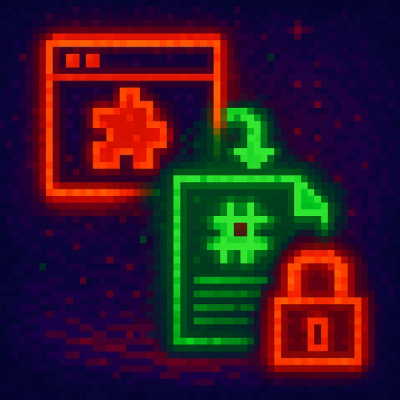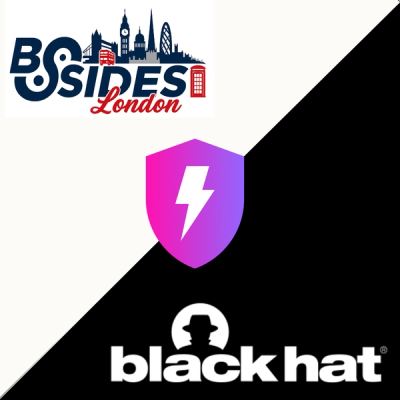AEM Command Line Interface (aem)
Status




The AEM Command Line Interface allows web developers to create, develop, and deploy digital experiences using the Adobe Experience Manager Sites feature Edge Delivery Services. Some of this functionality was known as Franklin or Project Helix before.
Installation
Install aem as a global command. You need Node 12.11 or newer.
npm install -g @adobe/aem-cli
If this fails with File exists: /opt/homebrew/bin/hlx, please see here.
Quick Start
$ aem --help
Usage: aem <command> [options]
Commands:
aem up Run a AEM development server
aem import Run the AEM import server
Options:
--version Show version number [boolean]
--log-file, --logFile Log file (use "-" for stdout) [array] [default: "-"]
--log-level, --logLevel Log level
[string] [choices: "silly", "debug", "verbose", "info", "warn", "error"]
[default: "info"]
--tls-key, --tlsKey Path to .key file (for enabling TLS) [string]
--tls-cert, --tlsCert Path to .pem file (for enabling TLS) [string]
--help Show help [boolean]
use <command> --help to get command specific details.
for more information, find our manual at https://github.com/adobe/helix-cli
Starting development
$ cd <my-cool-project>
$ aem up
automatically open the browser
The --open argument takes a path, eg --open=/products/, will cause the browser to be openend
at the specific location. Disable with --no-open'.
browser console log forwarding
The --forward-browser-logs flag enables forwarding of browser console messages (log, error, warn, info) to the terminal. This is particularly useful for debugging client-side issues without having to open the browser's developer tools.
$ aem up --forward-browser-logs
When enabled, browser console messages will appear in your terminal with the following format:
[Browser:error] 2025-07-27T10:30:45.123Z http://localhost:3000/script.js:42 Error message here
This feature is especially helpful when:
- Debugging JavaScript errors in a headless environment
- Monitoring client-side behavior during development
- Working with AI coding assistants that need visibility into both server and client logs
setting up a self-signed cert for using https
$ openssl req -new -newkey rsa:4096 -x509 -sha256 -days 365 -nodes -out server.crt -keyout server.key -subj "/CN=localhost"
this will create 2 files: server.crt and server.key
Alternatively, if your browser does not trust the certificate, you can use mkcert to generate a trusted certificate:
mkcert -cert-file server.crt -key-file server.key localhost 127.0.0.1
- start aem with tls support
$ aem up --tls-cert server.crt --tls-key server.key
___ ________ ___ __ __ v14.26.1
/ | / ____/ |/ / _____(_)___ ___ __ __/ /___ _/ /_____ _____
/ /| | / __/ / /|_/ / / ___/ / __ `__ \/ / / / / __ `/ __/ __ \/ ___/
/ ___ |/ /___/ / / / (__ ) / / / / / / /_/ / / /_/ / /_/ /_/ / /
/_/ |_/_____/_/ /_/ /____/_/_/ /_/ /_/\__,_/_/\__,_/\__/\____/_/
info: Starting AEM dev server v14.26.1
info: Local AEM dev server up and running: https://localhost:3000/
- (optional) Add arguments to .env file:
$ echo -e "AEM_TLS_CERT=server.crt\nAEM_TLS_KEY=server.key" >> .env
environment
All the command arguments can also be specified via environment variables. the .env file is
loaded automatically.
example:
.env
AEM_OPEN=/products
AEM_PORT=8080
AEM_PAGES_URL=https://stage.myproject.com
HTTP Proxy
In order to use a HTTP proxy (eg behind a corporate firewall), you can set the respective environment variables:
NO_PROXY is a list of host names (optionally with a port). If the input URL matches any of the entries in NO_PROXY, then the input URL should be fetched by a direct request (i.e. without a proxy).
Matching follows the following rules:
NO_PROXY=* disables all proxies.
Space and commas may be used to separate the entries in the NO_PROXY list.
If NO_PROXY does not contain any entries, then proxies are never disabled.
If a port is added after the host name, then the ports must match. If the URL does not have an explicit port name, the protocol's default port is used.
Generally, the proxy is only disabled if the host name is an exact match for an entry in the NO_PROXY list. The only exceptions are entries that start with a dot or with a wildcard; then the proxy is disabled if the host name ends with the entry.
See test.js for examples of what should match and what does not.
*_PROXY
The environment variable used for the proxy depends on the protocol of the URL. For example, https://example.com uses the "https" protocol, and therefore the proxy to be used is HTTPS_PROXY (NOT HTTP_PROXY, which is only used for http:-URLs).
If present, ALL_PROXY is used as fallback if there is no other match.
Global
--log-file | AEM_LOG_FILE | - | Log file. use - to log to stdout |
--log-level | AEM_LOG_LEVEL | info | Log level |
Up command
--port | AEM_PORT | 3000 | Development server port |
--addr | AEM_ADDR | 127.0.0.1 | Development server bind address |
--livereload | AEM_LIVERELOAD | true | Enable automatic reloading of modified sources in browser. |
--no-livereload | AEM_NO_LIVERELOAD | false | Disable live-reload. |
--forward-browser-logs | AEM_FORWARD_BROWSER_LOGS | false | Forward browser console logs to terminal. |
--open | AEM_OPEN | / | Open a browser window at specified path after server start. |
--no-open | AEM_NO_OPEN | false | Disable automatic opening of browser window. |
--tls-key | AEM_TLS_KEY | undefined | Path to .key file (for enabling TLS) |
--tls-cert | AEM_TLS_CERT | undefined | Path to .pem file (for enabling TLS) |
Starting an import
The AEM Importer is an application that supports importing content to AEM.
$ cd <my-cool-project>
$ aem import
Read the full AEM Importer documentation.
Developing AEM CLI
Testing
You can use npm run check to run the tests and check whether your code adheres
to the aem-cli coding style.
Browser Injectables
Browser-injected scripts (LiveReload and console log forwarding) are maintained in a separate sub-project at packages/browser-injectables/. This isolation keeps browser testing dependencies separate from the main CLI.
Development
- Injectable scripts are in
packages/browser-injectables/src/
- No build step required - scripts are used directly
- Browser tests run only when injectable code changes
Testing Browser Injectables
cd packages/browser-injectables
npm install
npm test
Troubleshooting
aem up fails with unable to get local issuer certificate
This error occurs when the server certificate is not trusted by Node.js. The typical
cause is that connections to the server *.aem.page and *.hlx.page are intercepted
by an enterprise proxy or firewall which is trying to inspect the traffic.
These proxies use a private certificate authority (CA) to sign the certificates of the
servers they intercept. To make Node.js trust the server certificate, you need to add
the CA certificate to the list of trusted CAs.
Option 1: Using IT-provided CA certificate
The CA certificate is typically provided by your IT department. You can ask them for
the CA certificate and save it to a file, e.g. my-ca.crt.
Then you can use the NODE_EXTRA_CA_CERTS environment variable to make Node.js trust
the CA certificate:
export NODE_EXTRA_CA_CERTS=my-ca.crt
aem up
If you don't have access to the CA certificate from your IT department, you can extract it directly
from your browser:
- Access the AEM admin URL in your browser (e.g.,
https://admin.hlx.page/sidekick/owner-name/repo-name/github-branch-name/config.json)
- Click on the padlock icon in the address bar and view the certificate details
- Export the certificate chain as a Base64 encoded
.pem file
- Save it to a directory (e.g.,
certs/hlx.page.pem)
- Set the environment variable and run aem:
export NODE_EXTRA_CA_CERTS=./certs/hlx.page.pem
aem up
On Windows, use set instead of export:
set NODE_EXTRA_CA_CERTS=./certs/hlx.page.pem
aem up
Either approach will make Node.js trust the server certificate and aem up should work.
npm install fails with File exists: /opt/homebrew/bin/hlx
If you try to install @adobe/aem-cli:
> npm install -g @adobe/aem-cli
...
npm error EEXIST: file already exists
npm error File exists: /opt/homebrew/bin/hlx
npm error Remove the existing file and try again, or run npm
This can happen when you previously had installed this tool under its old package name @adobe/helix-cli. Starting with version 15.0.0, this tool was renamed aem and published as @adobe/aem-cli. The previous @adobe/helix-cli has been deprecated. However, the new package still provides the command line binary under the old name hlx in addition to aem, for backwards compatibility, which can lead to the npm install error.
To solve, first uninstall the old version, then install again with the new name:
npm uninstall -g @adobe/helix-cli
npm install -g @adobe/aem-cli







